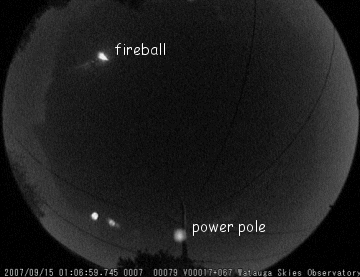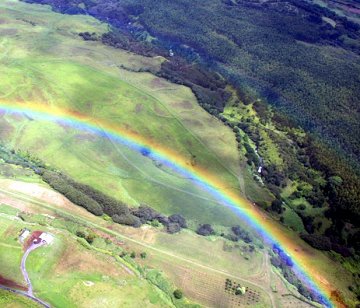 Where's Saturn? Is that a UFO--or the ISS? What's the name of that star? Get the answers from mySKY--a fun new astronomy helper from Meade. . Where's Saturn? Is that a UFO--or the ISS? What's the name of that star? Get the answers from mySKY--a fun new astronomy helper from Meade. . SUN ON FIRE: "Today the southeastern limb of the sun looks like it is burning," says Cai-Uso Wohler who took this picture from his backyard in Bispingen, Germany. The sun has been blank for days; "I hope this activity means there will be a sunspot coming around the limb soon." Amateur astronomers with solar telescopes are encouraged to monitor the situation. ANOTHER FIREBALL: "After seeing the September 13th New Mexico fireball on spaceweather.com, I was surprised to catch a very bright fireball here in Texas just two nights later," reports Tom King who operates an all-night, all-sky camera near Watauga, Texas, not far from Dallas/Fort Worth. "In the video, you can see where the meteor is bright enough to illuminate a power pole and trees!" 
Click to view the video.
"The gain control of the camera is slow to recover, so the pole and trees appear illuminated after the fireball is gone," he continues. "The fixed lights in the images are street lights." King notes that the Dallas/Fort Worth area is badly light polluted, yet his camera is doing a good job catching meteors. After the fireball at 1:06 am CDT, he recorded "another more typical meteor 8 minutes later (video), then 2 more during the remainder of the morning." UPDATE: In Arkansas, astrophographer Brian Emfinger reports: "I have had my camera shooting all night the last few nights and I have noticed quite a few meteors--including these two bright ones on Sept. 16th. The rate is definitely above normal." Tracing the meteors back to their point of origin reveals a possible radiant on the outskirts of the constellation Camelopardalis: diagram. Is a shower underway? Sky watchers, please be alert for more "Camelopardalids" in the nights ahead. RAINBOW UNDERFOOT: "Last week, we took a helicopter ride to see lava flowing from the Kilauea volcano on the Big Island of Hawaii," says photographer Mila Zinkova. "But before we reached the lava we saw a beautiful rainbow. It seemed to me that it made a complete circle beneath the heliocopter." (continued below) 
more images: #1, #2, #3, #4
Indeed, with the sun overhead and no ground to interrrupt the 'bow below, a complete 360-degree rainbow was on display underneath the chopper. If only Mila had had her fisheye lens! "Hawaii with its fine rain showers mixed with brilliant sun is ideal for rainbows," notes atmospheric optics expert Les Cowley. "The only problem is that the sun is often too high! Rainbows are always directly opposite the sun and when the is high in the sky the rainbow top dips below the horizon where you cannot see it. The solution? Climb a mountain or hire a helicopter for a better view." Cowley adds that if you're not in Hawaii, "a lawn sprinkler does a good job, too"
September 2007 Aurora Gallery
[August 2007 Aurora Gallery] [Aurora Alerts] | 
